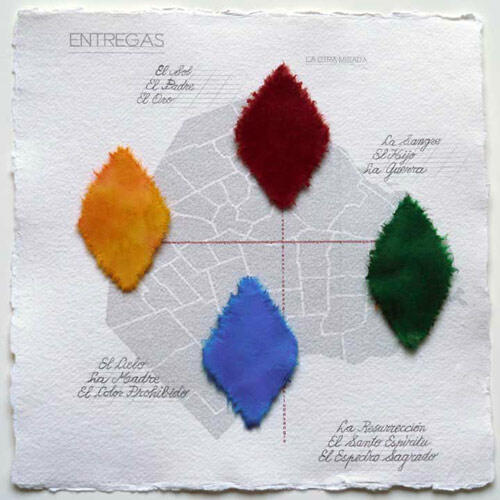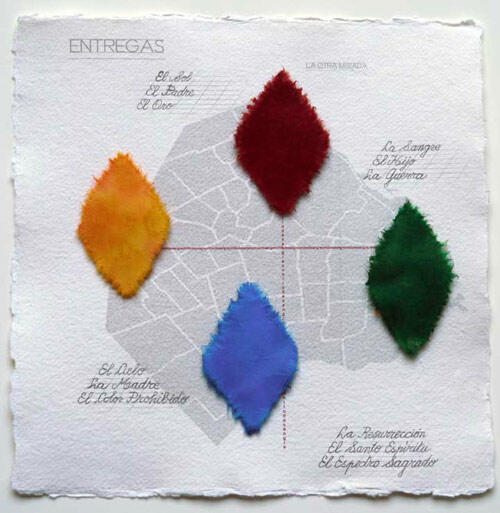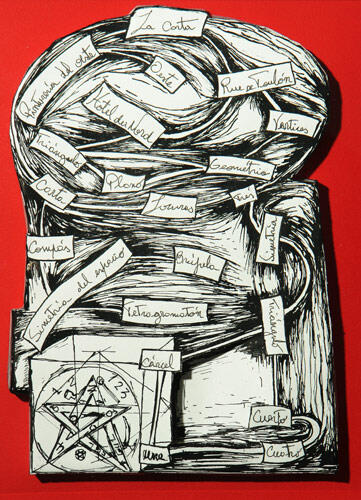Leandro Katz and Leonel Luna
Nora Fisch, Buenos Aires
Twenty-five years after Jorge Luis Borges’s death – June 14 was the anniversary of this date - Buenos Aires has become the venue for big
and small celebrations to commemorate the famous Argentine writer. In this context, the show LMYLB constitutes an intimate and original proposal,
in which the works of two noteworthy representatives of contemporary art - Leandro Katz (Buenos Aires, 1938), a member of the early generation of conceptual artists and one of the first to emphasize the Latin American theme in his work, and Leonel Luna (Buenos Aires, 1965), a many-sided artist whose work draws on documentary sources of a historical, artistic and social nature that enrich his interpretation – are presented together.

As in the classic detective stories in which mystery is limited to a closed room and all the answers and keys aimed at discovering the truth may be found within that microcosm, the LMYLB exhibition is reduced to a limited space: the rectangular room of Nora Fisch Gallery, whose walls are taken by the artists to draw multiple conjectures, inquiries and leads around La muerte y la brújula (Death and the compass), a classic story of Argentine literature, where the visitor can decode them, starting from pieces that take up tracks of the complex Borgean universe.
Upon entering the space, on one of the walls, 18 small works by Luna invite the viewer to come closer, in order to read the words displayed in paths made in ink on cut papers, entangled labyrinths which connect terms that make sense as they interrelate, as parts of small family trees. On the opposite wall, in Katz’ delicate works, also made on paper, words, color rhombuses, harlequins, maps, compasses and many other elements that emerge from the intricate itinerary drawn by Borges in his story and which provoke a search for intertextualities, senses and relationships, make their appearance.
In this way, behind the apparent simplicity and sobriety of both proposals linked by a narration, multiple themes intertwine and may be presumed, provoking at the same time infinite interpretations. The viewer becomes a detective who will unravel each one of the small labyrinths that make up the works that these two artists – as “pure reasoning” investigators, like Borges’ detective – produced especially for this show. Playful, complex, and enigmatic, the short story La muerte y la brújula (Death and the compass) condenses elements of Greek wisdom, Jewish mysticism, the Kabala, numerology and mathematics. The artists worked separately on the basis of this story, so that the oeuvres “are not the result of a direct collaboration during the making, but rather, they emerge from the enjoyment of the meeting of two minds that go over thought processes and refresh in the conversation with one another”, as reads the curatorial text.
Is a compass enough to find the way? If the essence of a labyrinth is to limit the most complex entanglement of roads to the smallest possible space and by doing so delay the traveler’s arrival at the center or the point of exit that he wished to reach, then this instrument will finally prove to be useless. But, who can resist a labyrinth?






